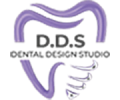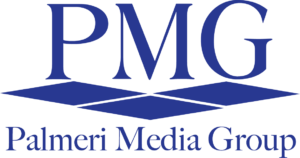Understanding Digital Smile Design (DSD)
Digital Smile Design (DSD) is an innovative approach in dentistry that combines technology, aesthetics, and patient input to create a customized treatment plan for improving the appearance of a patient’s smile. It utilizes digital tools and techniques to analyze the patient’s facial and dental characteristics, design a personalized smile, and simulate the potential outcomes before any treatment is performed.
The DSD process typically involves the following steps:
- Evaluation and Analysis: The dentist conducts a comprehensive evaluation of the patient’s facial structure, oral health, and smile aesthetics. This includes examining the teeth, gums, lips, and other facial features. Various diagnostic tools like photographs, videos, and 3D scans may be used to capture the patient’s current condition.
- Digital Imaging and Design: The collected data is then digitally processed and analyzed using specialized software. The dentist can manipulate the images to design the desired smile, considering factors such as tooth shape, size, color, symmetry, and overall facial harmony. This step allows for precise customization and visualization of the potential final results.
- Mock-up and Wax-up: Based on the digital design, the dentist may create a physical mock-up or wax-up of the proposed smile transformation. This allows the patient to preview and evaluate the planned changes and provide feedback.
- Treatment Planning: Once the patient and dentist are satisfied with the proposed smile design, a comprehensive treatment plan is developed. This plan may involve various cosmetic dental procedures such as teeth whitening, veneers, crowns, orthodontics, or gum reshaping, depending on the patient’s needs and goals.
- Execution: With the treatment plan in place, the actual dental procedures are performed to achieve the desired smile transformation. The specific techniques and duration of treatment will depend on the individual case.

Pricing Considerations in Digital Smile Design
A. Factors Influencing Cost
B. Consulting with Dentists or Dental Clinics
C. Obtaining Accurate Pricing Information
In terms of pricing, the cost of Digital Smile Design can vary depending on factors such as the complexity of the case, the geographical location, and the dental provider’s expertise. It is recommended to consult with a dentist or a dental clinic that offers DSD to get accurate pricing information based on your specific requirements.
Technologies in Digital Smile Design
A. Digital Imaging Software
B. Intraoral Scanners
C. CAD/CAM Technology
D. 3D Printing
E. Smile Simulation Software
Regarding the technologies involved in Digital Smile Design, several tools and techniques are commonly utilized. These may include:
- Digital Imaging Software: Specialized software programs enable dentists to capture and analyze digital images, simulate smile designs, and create treatment plans.
- Digital Scanners: Intraoral scanners are used to capture highly detailed 3D scans of the patient’s teeth and gums, eliminating the need for traditional dental impressions.
- CAD/CAM Technology: Computer-Aided Design/Computer-Aided Manufacturing (CAD/CAM) systems allow for the precise fabrication of dental restorations like crowns, veneers, and bridges based on digital designs.
- 3D Printing: Advanced 3D printing technology can be used to create physical models, surgical guides, and temporary restorations, aiding in treatment planning and execution.
- Smile Simulation Software: Specialized software can simulate the potential outcomes of the smile design, allowing the patient to visualize and approve the proposed changes before starting the treatment.
Digital Smile Design (DSD) offers several benefits for both patients and dental professionals. Here are some key advantages of DSD:
- Enhanced Communication and Collaboration: DSD promotes active patient involvement in the smile design process. Patients can provide input, express their preferences, and visualize potential outcomes before starting treatment. This collaborative approach improves communication between patients and dentists, ensuring that expectations are aligned and leading to higher patient satisfaction.
- Personalized Treatment Planning: DSD allows for precise customization of treatment plans based on each patient’s unique facial features, dental characteristics, and aesthetic goals. Dentists can analyze digital images, assess smile proportions, and create a comprehensive plan tailored to the individual’s needs. This personalized approach helps achieve natural-looking and harmonious smile transformations.
- Visualized Results: DSD utilizes advanced imaging and simulation software to create digital models and simulate the potential outcomes of smile designs. Patients can see a visual representation of how their new smile will look, allowing them to make informed decisions and provide feedback. This visualized result helps manage expectations, build confidence, and ensure patient satisfaction.
- Predictable Outcomes: By leveraging digital tools and technologies, DSD offers greater predictability in treatment outcomes. Dentists can analyze and plan each step of the treatment process with accuracy, reducing the likelihood of unexpected results. This predictability leads to more successful and reliable smile transformations.
- Efficient Treatment Process: DSD optimizes the treatment process by streamlining various stages. Digital tools such as intraoral scanners and CAD/CAM technology eliminate the need for traditional impressions and enable faster and more precise treatment planning. Additionally, digital communication with dental laboratories enhances the efficiency of fabricating dental restorations, reducing treatment timelines.
- Improved Patient Experience: DSD enhances the overall patient experience by minimizing the guesswork and uncertainty associated with traditional smile makeovers. Patients can actively participate, visualize their desired outcomes, and feel more confident in the treatment plan. Moreover, DSD can offer less invasive treatment options, preserving more natural tooth structure and reducing discomfort.
- Comprehensive Approach: DSD goes beyond just improving the aesthetics of the smile. It considers the overall facial harmony, tooth function, and oral health. Dentists assess factors such as bite alignment, occlusion, and gum health, ensuring that the smile transformation is both visually pleasing and functionally beneficial.
Digital Smile Design offers a revolutionary approach to smile makeovers, leveraging advanced technology and patient collaboration. This guide has provided you with a comprehensive understanding of the DSD process, pricing considerations, and the technologies involved. When considering a smile transformation, consult with a dental professional experienced in DSD to explore the possibilities and achieve the smile of your dreams. It’s important to note that the availability of specific technologies may vary between dental clinics. Therefore, it’s advisable to consult with a dental professional who specializes in Digital Smile Design to understand the exact technologies and techniques they utilize.













